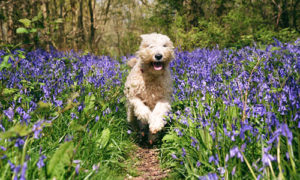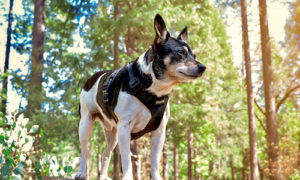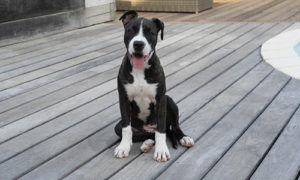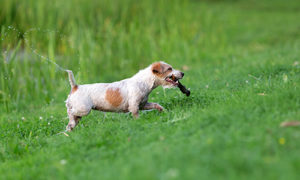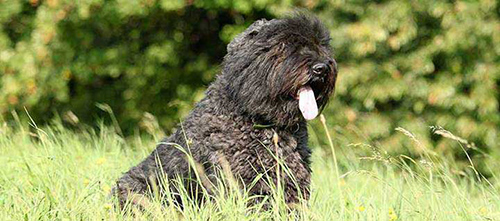
The Bouvier des Flandres played a vital role in helping cattle merchants and farmers control cattle on the Northern plain of France and the great farmlands of Southwest Flanders. Actually, the word bouvier is French for oxherd or cowherd, even though the dogs were formerly more often called Vuilbaard, which means dirty beard, or koe hond, which means cow dog. The Bouvier des Flandres is an all-around farming dog; even though its primary duty was cattle driving, it also functioned as a draft, guard, and livestock dog.
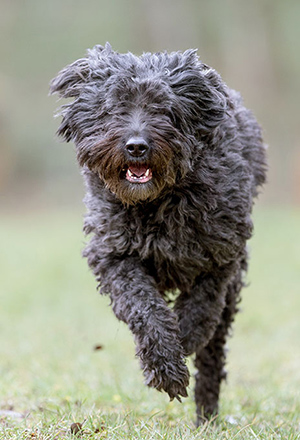
According to the customs of canines chosen to perform various tasks, this working breed comes in multiple colors, types, and sizes. The wide variety also revealed that this was a working dog, and the breeding stock was picked according to ability, not aesthetics or pedigree. Unfortunately, the breed’s origin has not been documented, but many believe it could have included spaniel breeds and mastiff sheepdogs.
In 1912, when the first breed standard was created, it reflected the diversity of types, and it led to a rising interest in the dog from enthusiasts. Many of the Bouvier des Flanders were lost in World War I during its rise in popularity, though some served as messenger and ambulance dogs. One survivor was of such superior quality that his offspring revived the breed. The hero dog’s name was Champion Nic de Sottegem and can be found in practically every modern Bouvier des Flandres pedigree.
A revised standard further defined the desirable Bouvier type and helped pave a more uniform breed in 1922. In 1931, when the first Bouvier des Flandres entered American show rings, it sparked plenty of attention among dog lovers. Unfortunately, the breed never gained popularity, but they’re well-known in dog shows and herding trials circles.
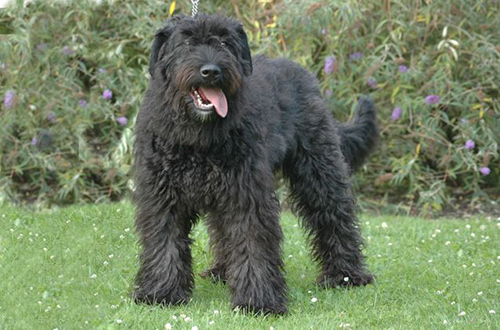
Breed Standard
This dog is sturdy, big, and short-coupled with strong bone, a rough, shaggy coat, and a high, short, docked tail. Its head is accentuated by an impressive beard and mustache, a broad muzzle, powerful jaws, a large, black nose, and keen, oval-shaped eyes.
Breed Facts
| Energy level | Watchdog ability | ||
| Exercise requirements | Protection ability | ||
| Playfulness | Grooming requirements | ||
| Affection level | Cold tolerance | ||
| Friendliness toward dogs | Heat tolerance | ||
| Friendliness toward other pets | Friendliness toward strangers | ||
| Ease of training |
- Popularity: Somewhat uncommon
- Family Group: Livestock, Herding
- Country of Origin: Belgium
- Date Developed: 1600s
- Original Purpose: Cattle herding
- Current Function: Security, herding trials
- Other Names: Belgian Cattle Dog
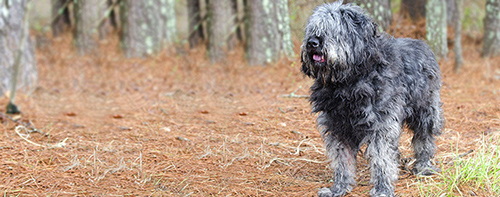
Activity Level: Moderate to high. This dog is a well-behaved, calm housedog, though it is also a working breed. Therefore, regular daily exercise is highly recommended. A Bouvier des Flandres should get at least 30 minutes of exercise 3 to 4 times a day. This dog also needs daily interaction. It relishes any opportunity to herd.
Grooming: The coat requires brushing twice weekly to prevent matting. The beard needs to be washed daily.
Coat: A combination of a harsh, rough outer coat and a soft undercoat that is fine but dense. Its double coat protects it from all types of weather.
Color: Shades range from black to fawn, including salt and pepper, brindle, and gray.
Group: Herding
Year recognized by the AKC: 1931
Pronunciation: [boo-vyeyz duh -flan-derz; French boo-vyey dey -flahn-druh].
Bouvier des Flandres Temperament
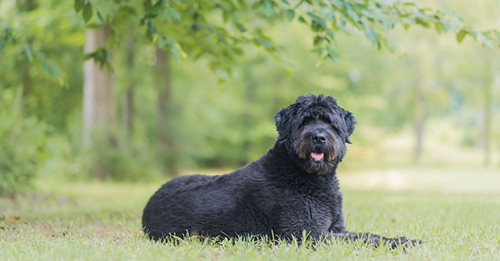
The Bouvier was developed for working versatility and ability. According to the breed standard, it is steady, fearless, and persistent. The dogs are vigilant watchdogs and quick learners. The breed is strong-willed and will fare better with a stern and confident owner. Bouviers have been utilized to drive cattle to pull carts, guard homes, and livestock. They have an immaculate record as guide dogs for the blind, war dogs, and police dogs. They are also great competitors in herding, obedience trials, agility, and tracking.
Bouviers can be domineering at times. It is aloof and protective toward strangers and will show aggression toward strange dogs. The dogs are excellent with children, though there is potential for them to nip at heels while in play. Bouviers are notorious barkers and diggers.
Health
- Main Problems: CHD, glaucoma, elbow dysplasia, SAS
- Minor Issues: hypothyroidism
- Rarely Seen: none
- Recommended Tests: hip, elbow, cardiac, (eye)
- Life Span: 10 to 12 years
- Weight: 69 to 90 pounds
- Height: male – 24.5 to 27.5 inches; female – 23.5 to 26.5 inches
Breeder and Buyer’s Advice
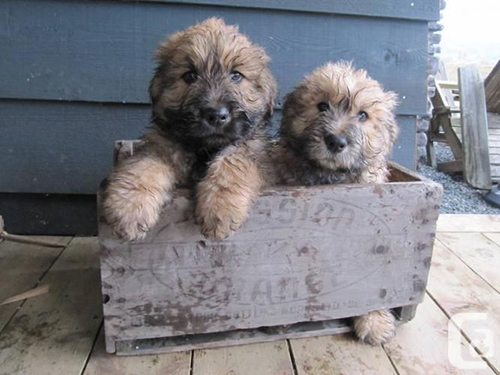
Make sure to purchase your Bouvier from a reputable breeder and confirm that the puppy’s parents have been health tested. These dogs require confident owners who sincerely want to share their lives with a devoted canine companion and are prepared to devote time and training. The best way to find Bouvier des Flandres puppies for sale is to visit the parent club’s website, where you can find a listing of breeders in your area.
You can also find puppies online wherever you are around the world. For instance, if you live in Europe, you can type “Bouvier des Flandres puppies for sale UK” into Google or any search engine of your choice. Another search term popular with people looking for breeders is “Bouvier des Flandres puppies for sale near me.” The puppy’s price depends on the breeder and the dog’s pedigree.
Parent club: American Bouvier des Flandres Club: founded in 1963
Rescue: American Bouvier Rescue League

